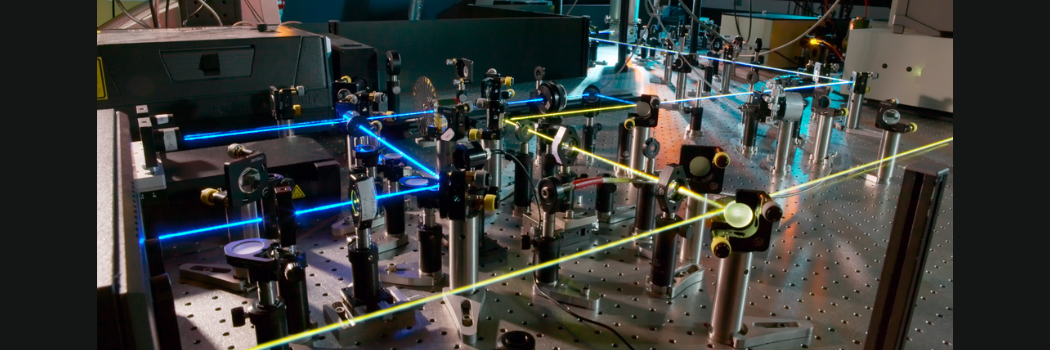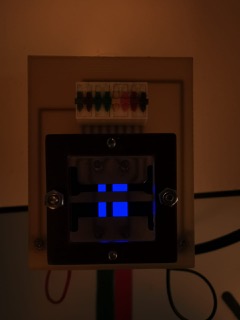New research opens avenues for more efficient and stable blue OLED displays

Researchers in our top-rated Physics department are world-leading experts in their field. In a surprising discovery, our scientists have found that certain molecules long considered poor emitters are actually ideal for boosting efficiency and stability in next-generation blue OLED displays. The study published in the journal Nature Photonics, reveal an overlooked molecular ‘blind spot’ that could enable major advances in energy-saving display technologies.
Outshining expectations
Organic light-emitting diodes (OLEDs), used in most smartphones and TVs today, rely on specialised organic molecules to emit light.
However, obtaining efficient and stable blue OLED emission has remained a difficult challenge for researchers.
Now, the research team has revealed that molecules previously dismissed as subpar light emitters can be used to triple the efficiency of blue OLEDs.
A molecule called ACRSA was found to increase device efficiency from 10% to over 28% when used as a sensitiser in ‘hyperfluorescent’ OLEDs, where energy is transferred from the sensitiser to a separate terminal emitter molecule.
An illuminating discovery
Even more remarkably, using the greenish sensitiser ACRSA, blue emission can be achieved by transferring ACRSA’s energy to a blue terminal emitter.
This green-to-blue approach reduces exciton energy compared to direct blue emitters, enabling more stable, longer-lasting blue OLEDs.
The team's strategy provides a new blueprint for designing stable and highly efficient hyperfluorescent OLED displays.
This new understanding opens up exciting possibilities for both fundamental research and practical applications.

More about OLEDs
Organic Light Emitting Diodes, “OLEDs” are becoming more common place in out mobilephones and televisions. Picture quality is superb, but such perfection comes at a high cost in terms of battery life and energy consumption. To address this, we have studied the fundamental light generation processes in an OLED to produce extremely pure saturated colour at up to four time more efficiently than current OLEDs. To achieve pure red, green and blue colours, currently colour filters are used that effectively throwing away 70% of the light created, wasting large amounts of energy. In the work we report in Nature Photonics we demonstrate how the process of hyperfluorescence can be optimised in a non-intuitive fashion to produce intrinsically highly saturated colours at very high efficiency (close to 100%) without the hugely wasteful optical filters. Hyperfluorescence was first demonstrated in OLEDs nearly 10 years ago, however it has been very difficult to control, especially for blue light. Here, two different molecules are used to generate the light in the OLED. The first converts electrical current into light at near 100% efficiency, but instead of simply emitting that light which requires optical filtering to achieve usable colours for the display, the light energy is passed on to a second terminal emitter molecule, in a sensitisation mechanism, thisemits with an intrinsically narrow emission band yielding saturated colour without filters.This second molecule however cannot directly convert current to light at high efficiency. Until our new work, the sensitiser molecule was always selected to have the best possible light generation efficiency, assuming that then it would transfer the most light to the terminalemitter molecule. However, what we discovered is that in fact this is not the best strategy. In fact, to achieve the most efficient sensitisation and obtain the purest colours, requires photophysical properties that make the sensitiser molecule a rather mediocre emitter in its own right, one that would never be used in a standard OLED design and previously would have been overlooked for hyperfluorescent applications. However, such sensitisers ensure 100% of their light energy is transferred to the terminal emitter, whereas very good emitting sensiters emit light in competition with the terminal emitter giving non-saturated emission which requires optical filtering. In our study we determine the optimal photophysical parameters for the sensitiser to give 100% sensitisation with no parasitic sensitiser emission. In the best examples we take a sensitiser that on its own only produces 10% efficient OLEDs, but when combined with a hyperfluorescent emitter we achieved 28% efficient OLEDs giving saturated blue light, 4 times better than current state of the art blue OLEDs, saving nearly 40% energy consumption. If we were to apply such energy savings across all displays globally, some 400-500 TWhrs of electricity could be saved annually.
Find out more
- This study was led by Kleitos Stavrou and Professor Andrew Monkman.
- Read the full paper published in the journal Nature Photonics.
- Interested in studying at Durham? Explore our undergraduate and postgraduate courses.
Our Department of Physics is a thriving centre for research and education. Ranked 2nd in the UK by The Guardian University Guide 2023 and in the World Top 100 in the QS World University Rankings by Subject 2023, we are proud to deliver a teaching and learning experience for students which closely aligns with the research-intensive values and practices of the University.
Feeling inspired? Visit our Physics webpages to learn more about our postgraduate and undergraduate programmes.


/prod01/prodbucket01/media/durham-university/departments-/physics/teaching-labs/VT2A9034-1998X733.jpeg)